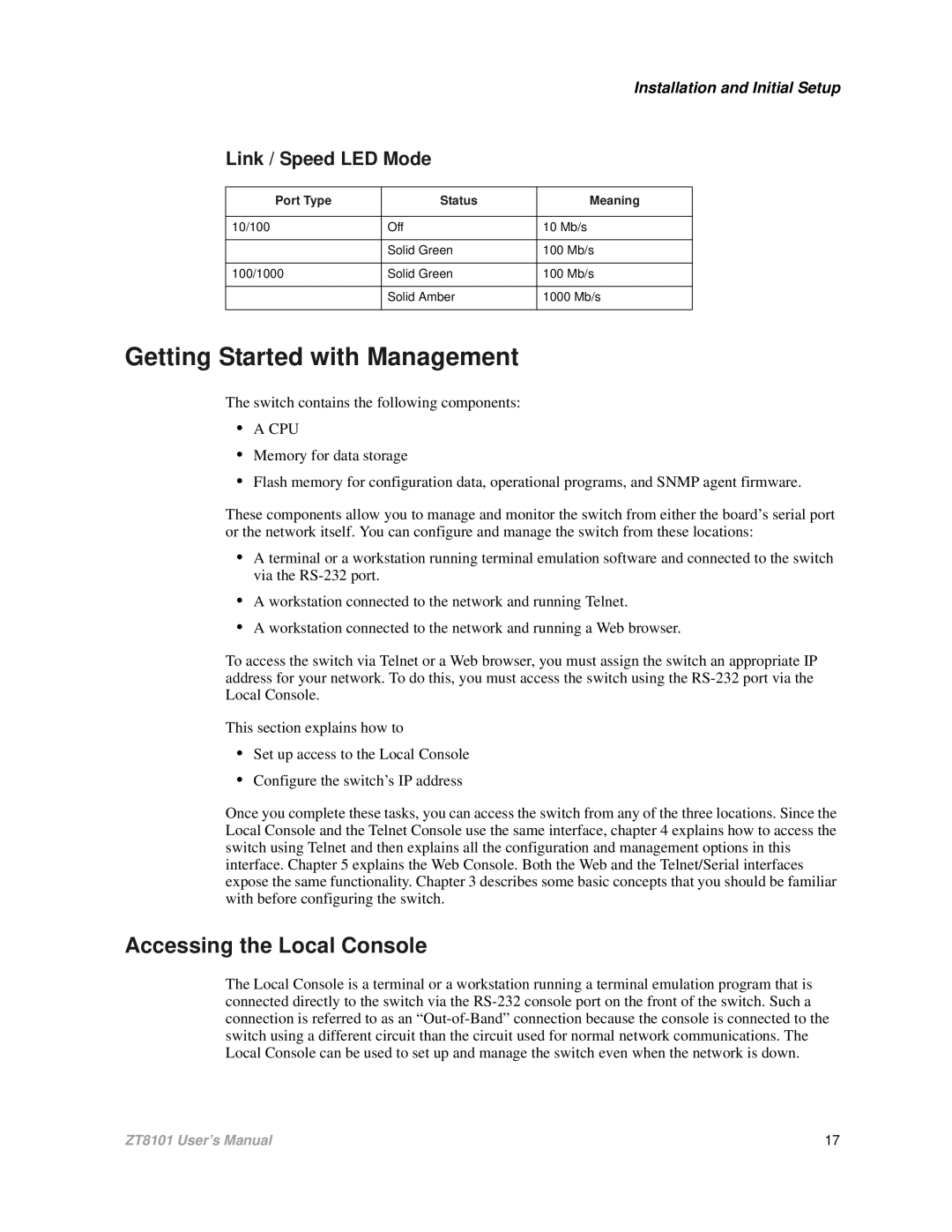Installation and Initial Setup
Link / Speed LED Mode
Port Type | Status | Meaning |
|
|
|
10/100 | Off | 10 Mb/s |
|
|
|
| Solid Green | 100 Mb/s |
|
|
|
100/1000 | Solid Green | 100 Mb/s |
|
|
|
| Solid Amber | 1000 Mb/s |
|
|
|
Getting Started with Management
The switch contains the following components:
•A CPU
•Memory for data storage
•Flash memory for configuration data, operational programs, and SNMP agent firmware.
These components allow you to manage and monitor the switch from either the board’s serial port or the network itself. You can configure and manage the switch from these locations:
•A terminal or a workstation running terminal emulation software and connected to the switch via the
•A workstation connected to the network and running Telnet.
•A workstation connected to the network and running a Web browser.
To access the switch via Telnet or a Web browser, you must assign the switch an appropriate IP address for your network. To do this, you must access the switch using the
This section explains how to
•Set up access to the Local Console
•Configure the switch’s IP address
Once you complete these tasks, you can access the switch from any of the three locations. Since the Local Console and the Telnet Console use the same interface, chapter 4 explains how to access the switch using Telnet and then explains all the configuration and management options in this interface. Chapter 5 explains the Web Console. Both the Web and the Telnet/Serial interfaces expose the same functionality. Chapter 3 describes some basic concepts that you should be familiar with before configuring the switch.
Accessing the Local Console
The Local Console is a terminal or a workstation running a terminal emulation program that is connected directly to the switch via the
ZT8101 User’s Manual | 17 |
